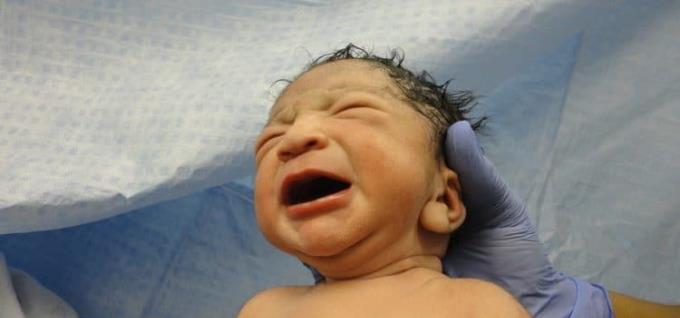With your due date nearing, you may be very anxious, especially if you are afraid of pain. So, learn the stages of the childbirth process in advance to be ready to overcome it.
It is very important to learn about the stages of the birth of a baby, to help you prepare the best mentally and health for the birth of your baby. If you feel stressed, think that just through this stage, you will be able to hold the baby you have been waiting for in your arms. The process of labor usually has 3 stages:
Stage 1: Labor
The cervix is the part of the uterus that connects the uterus to the vagina. During labor, the cervix opens, allowing the baby to pass through the birth canal. This phase will have 3 periods:
1. The stage of early labor
At this stage, the cervix dilates from 0 to 4 cm. The duration of this stage can last from 6-10 hours or less. Each woman will experience different contractions during this period, which can be mild but can also be intense.
2. The stage of active labor
The cervix is dilated by 4 - 7cm. This is the time to start preparing for a normal birth. On average, it usually lasts 3 - 6 hours. The contractions become more intense, every 3 - 5 minutes. You may see thick, bloody spoilage in your underwear or in the toilet bowl.
3. Stage of transitional labor
This stage of the cervix will enlarge about 10cm and usually last from 20 minutes to 2 hours. The uterine contractions are very strong, happening every 2.5 to 3 minutes and each lasting for more than 1 minute. In addition, you may experience nausea, tremors and fatigue along with burning or itching in the vaginal area.
Note: The process of labor will be very difficult for you because the pain from contractions in the abdomen comes regularly. However, even if it is very painful, you must still breathe deeply and evenly every time a contraction comes. This helps provide adequate oxygen to your baby through the umbilical cord .
Stage 2: Squeeze your baby out

This stage begins when the cervix has completely enlarged and usually lasts about 2 hours. Your task now is to get all your strength and determination to push and push the baby out of the birth canal. During this process, you will begin to feel short of breath and tired. After a while, the base of your pelvis, the tissue between your vagina and rectum, begins to bulge with each push. Not long after, the baby's head will come out. This will be a great moment for you.
At this point, if you are having trouble, your doctor may recommend a small incision in the episiotomy (the area between the vagina and rectum) to ease the passage of your baby. When the baby's head comes out, you will be instructed to push the baby's shoulder away, then the baby's body is also pushed out.
Stage 3: Book the placenta
This is the last stage of childbirth, from the moment the baby is born until the placenta and mucous membranes are ejected. A few minutes after birth, the uterus begins to contract again to separate the placenta from the uterine wall. When you see signs of this separation, your doctor will ask you to gently push to expel the placenta. This usually requires only a short, non-difficult push and can be painful.
Your doctor encourages you to feed your baby right after birth to help your uterus contract and rebound. In addition, your doctor will periodically check to see if your uterus is elastic. If not, you need a massage.
Hopefully, you will know through the above sharing how each stage of the superficial process takes place. While the process is difficult, try to stay calm. Panic and anxiety will not help but only make you more stressed and tired. Try to think of how adorable the baby's face when he was born.
Please see more articles What will the baby's first day of life look like?












